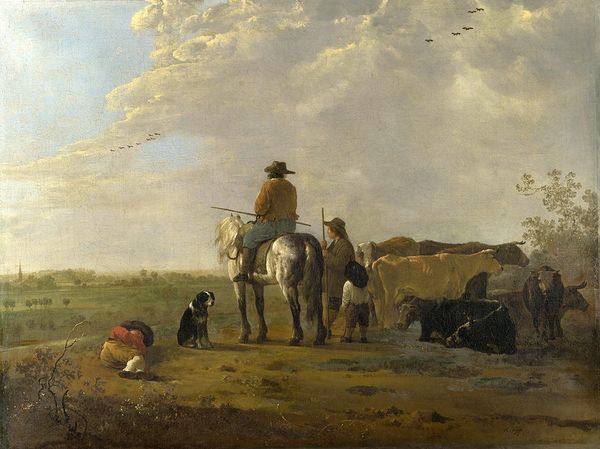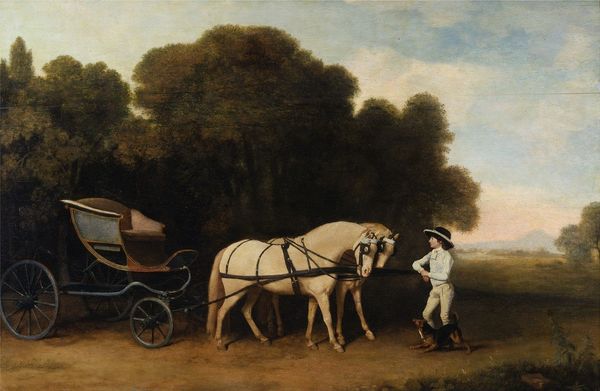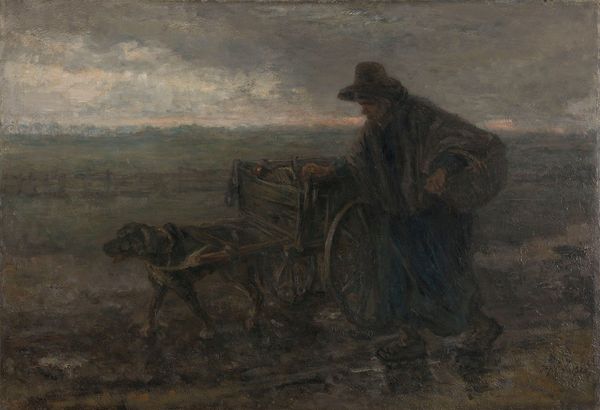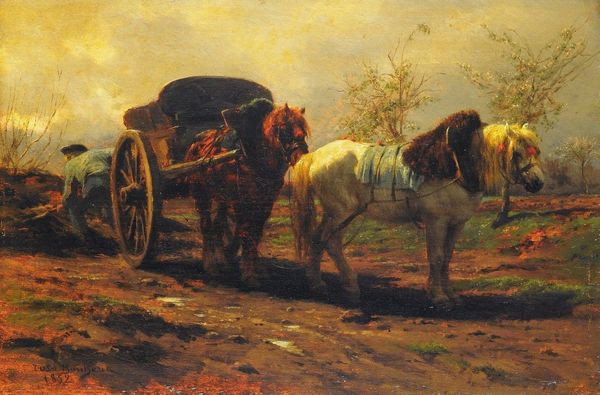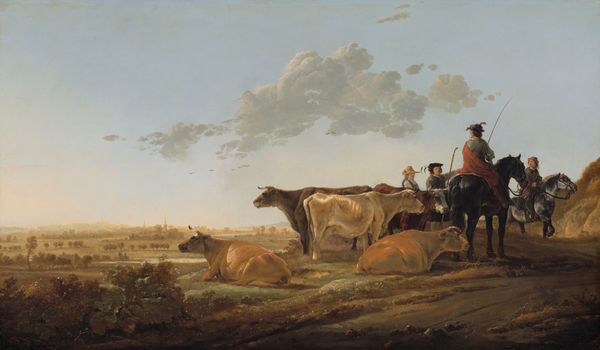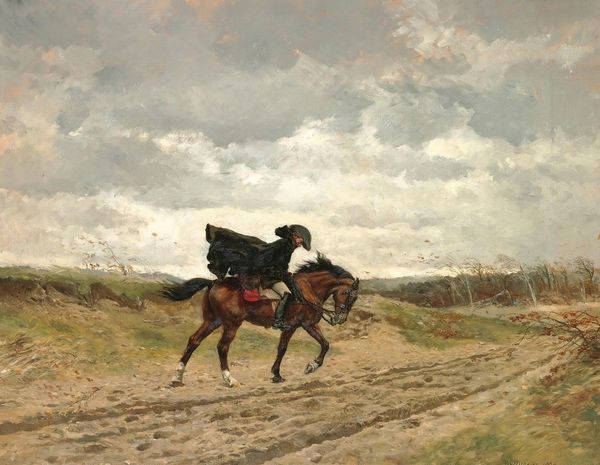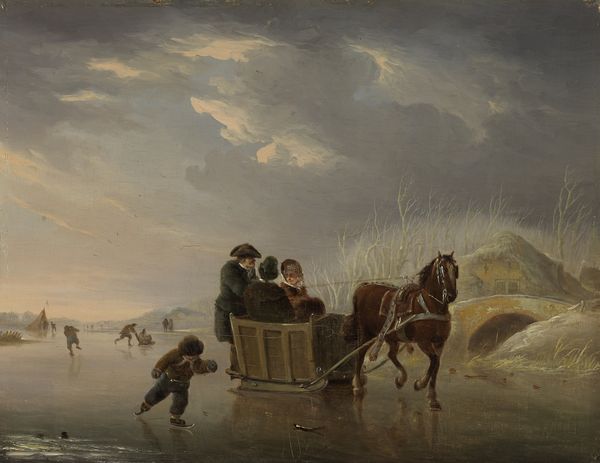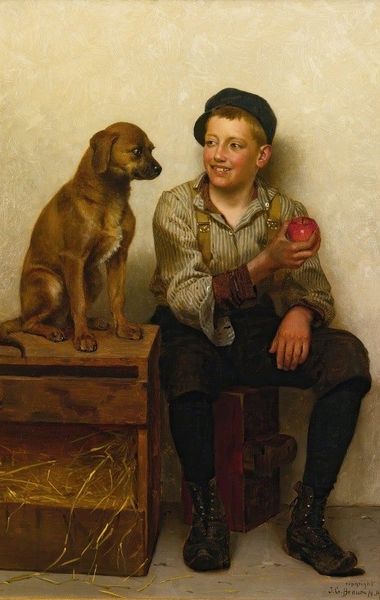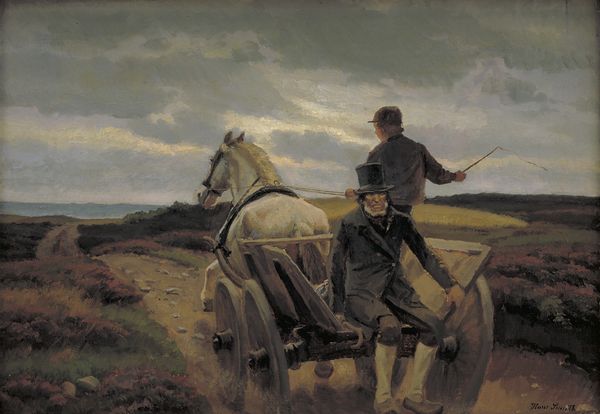
Copyright: Public Domain: Artvee
Curator: Immediately striking is the almost frantic energy radiating from this piece; the implied motion and the rather distressed expressions on the dogs! Editor: Indeed! What you’re reacting to is Henriëtte Ronner-Knip’s "Boy with a Dog Cart," likely created between 1850 and 1860 using oil paint. Genre paintings such as this offer insight into the everyday realities and material circumstances that framed ordinary people. Curator: "Everyday realities" – exactly! Look at the texture rendered so convincingly; one can practically feel the roughness of the path, the strain on the dogs' harnesses, the simple weave of the boy’s hat. What does it say about the division of labor? Editor: Well, traditionally, dogs pulling carts served very practical purposes. You'd see them transporting goods, assisting vendors. So it's not merely an idyllic scene, but a depiction of labor utilizing animals. Also, consider the relationship between boy, dogs, and their load – is this simply utilitarian or is something more implied here? The composition guides us from those working dogs and up to the overseeing boy. Curator: Good point about the composition. Formally, note the sharp contrast between the frantic action in the foreground, defined by those tense dog figures, and the placid distance. And those earth tones really dominate – brown, ochre. I suppose those echo how tied everything is here to soil and manual activity? The boy himself blends almost imperceptibly into those dull tones. Editor: Ronner-Knip paid great attention to detail. The harnessing, the wear and tear evident on the cart. It emphasizes the practical aspects of this sort of life – the material reality of transport, commerce. She treats the depiction of those canines with meticulousness and imbues those animal portraits with such care that their importance is placed just as equally. Curator: And that one, almost out-of-frame, off to the right side! Such careful layering that adds nuance to her scene, I would say! To reflect more upon our earlier impressions, perhaps this is less about ‘romance’ and more about illustrating labor realities of this specific moment and place in history? Editor: Perhaps so. Ultimately it's left for viewers to engage, reflect, and decode as they deem suitable to them. Thank you both for joining me. Curator: Indeed, food for thought.
Comments
No comments
Be the first to comment and join the conversation on the ultimate creative platform.


